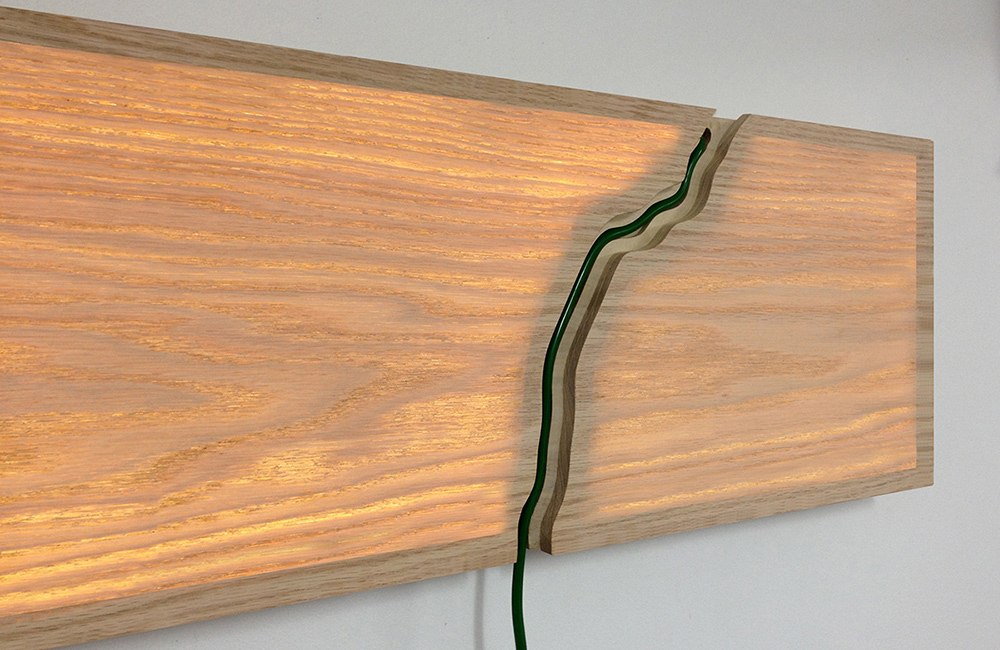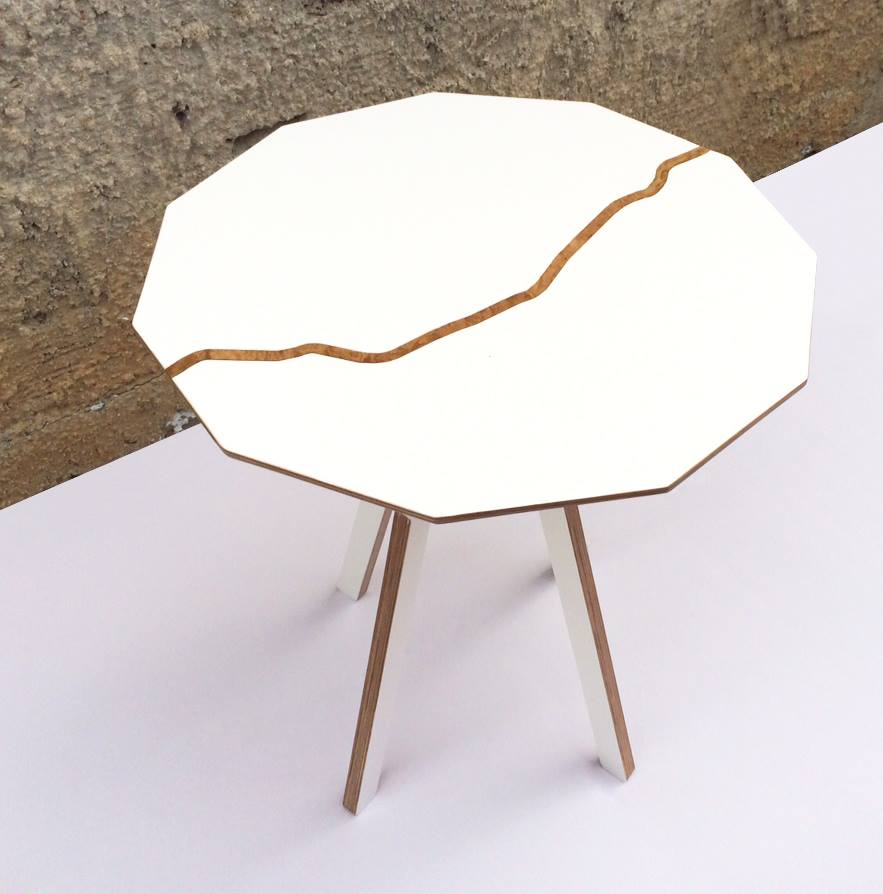Exhibited at the Papenhuder 57 Gallery, Hamburg, Germany, 2015
Design & Manufacture: Constantinos Economides, Marios Charalambous
Curator: Yianna Tsolaki
Materials: Solid oak wood and veneer

The ‘Green Line’ wall lamp is inspired entirely by Cyprus’ own ‘Green Line’, so-called after the British used a green crayon to divide the map of the island in 1963, separating north from south. Thereafter, since the 1974 Turkish invasion, the northern 35% of Cyprus has been under occupation.
In terms of the lamp, the Green Line is represented by a prominent green wire, which becomes a crucial element in the overall design language of the object. The wire divides the wall lamp into two parts: 65% and 35% of its surface respectively.
Made of solid oak wood and veneer, the lamp is characterised by its material simplicity. When lit, the distinctive features of the material become visible, revealing the grains of the oak veneer, while the boundaries of the lamp’s green wire remain dark, indicating the darkness of the ‘dead zone’ dividing Cyprus.
Design & Manufacture: Constantinos Economides, Marios Charalambous
Concept Creation & Curation: Yianna Tsolaki

Picking up from the ‘Green Line Lamp’, with its darkened line indicating Nicosia’s ongoing division, the ‘Green Line Table’ seeks to ‘undo’ earlier conceptual references with the conditions of the divided capital.
Looking to the future, the ‘Green Line’ – so-called due to the divide drawn across the map of the island with a green crayon by the colonial British, after intercommunal violence broke out in 1963 – becomes a landmark of the city. Having already led to decades of de facto partition, the Green Line is, therefore, no man’s land, running over 180km across Cyprus, and dividing its capital, Nicosia.
The ‘Green Line Table’ does not seek to erase the mark that will remain should this division cease to exist, some day. On the contrary, it is inlaid in the material of the object, as the divide of Cyprus has been marked into its earth. Time might eventually erase the division, but the scars in the earth will remain, telling the story of the darkened line.
But whereas the emphasis of both the ‘Green Line Lamp’ was the division of the city and the contrast in its sectors’ topography, in the ‘Green Line Table’ this ceases to exist and both sides are depicted identically in structure, material, colour and emotion… as though anticipating a new beginning. This unity signals the aspiration to heal the wounds of the divided people and city, setting the past to rest and revealing new horizons beyond the former trauma.